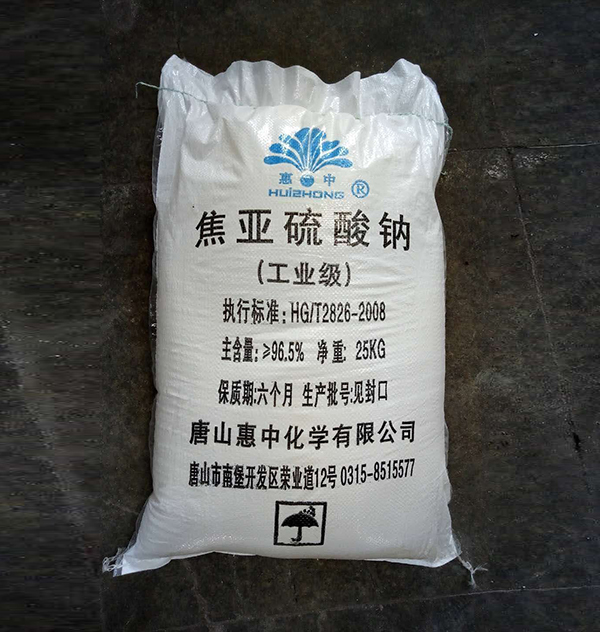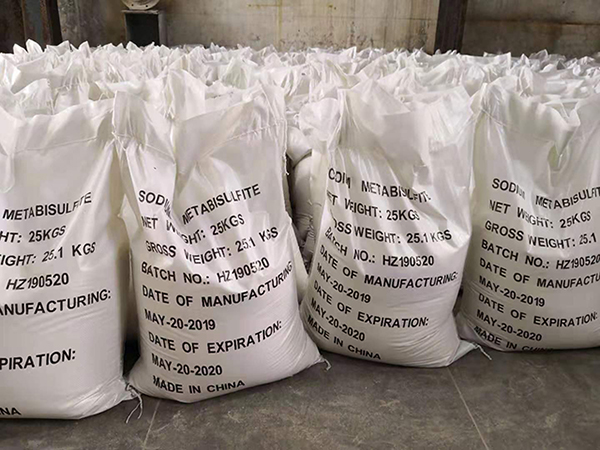The difference between sodium metabisulfite food grade and industrial grade
The differences between sodium metabisulfite food grade and industrial grade are as follows:
One: According to the comparative national standard:
1. The requirements of industrial grade without clarity and lead-free content are required for food grade.
2. The requirements of food grade fe content is below 30PPM, industrial grade is below 50PPM.
3. The main content of food-grade and industrial-grade superior products are both required to be greater than 96.5%. (That is, the difference is iron content (industrial 50PPM, food grade 30PPM, general enterprises at 20ppm), lead content (food grade requirements below 5PPM, industrial grade is not required), and clarity (food grade requires clarification, industrial grade is not required. )
Two: In actual enterprise production, the main content is generally more than 97%, but the production of food grade needs to obtain a food production license. Obtaining this certificate requires the cleanliness of the factory building, such as tiling and replacing with stainless steel production lines. . Many only produce industrial grade without this certificate.

Sodium metabisulfite quality index
Physical and chemical properties of sodium metabisulfite: molecular formula Na2S2O5, molecular weight 190.10, colorless, white or off-white crystal or crystalline powder, sulfur dioxide odor, acid, salty. It is easily soluble in water, and slightly soluble in ethanol. To check the quality of sodium metabisulfite, we have these test items:
①Appearance: colorless, white or off-white crystal or crystalline powder
②Identification: should meet the regulations
③ Acidity: pH value should be 3.5~5.0
④Clarity and color of solution: clear and colorless
⑤Content: Mass fraction containing sodium metabisulfite≥96.5%
⑥Heavy metals: ≤20ppm
Testing method
1. Appearance: This product is colorless, white or off-white crystal or crystalline powder; it has sulfur dioxide smell, acid and salt.
Identification:
1) Take the iodine test solution, add an appropriate amount of the aqueous solution of the product (1→20), the color of iodine disappears; the resulting solution shows the identification reaction of sulfate: take the test solution and add the barium chloride test solution dropwise, which is generated White precipitate; isolated, the precipitate is insoluble in hydrochloric acid or nitric acid.
2) Take platinum wire, moisten with hydrochloric acid, dip to take the test sample, burn in a colorless flame, the flame is bright yellow.
2. Acidity. Take 1.0 g of this product, dissolve it with 20 ml of water, and measure with an acidity meter. The pH value is 3.5 to 5.0.
3. Clarity. After taking 1.0g of this product and dissolving it with 10ml of water, the solution should be clear and colorless.
4. Determination of the content of sodium metabisulfite. Take about 0.15g of this product, weigh it accurately, put it in an iodine bottle, add 50ml of iodine titration solution (0.05mol/L), plug tightly, shake and dissolve, add 1ml of hydrochloric acid, use thiol Sodium sulfate titration solution (0.1mol/L) was titrated. When the end point was reached, 2ml of starch indicator solution was added and the titration continued until the blue color disappeared; the titration results were corrected with a blank test. Each lml iodine titration solution (0.05mol/L) is equivalent to 4.752mg Na2S2O5.
5. Heavy metals. Take 1.0g of this product, add 10ml of water to dissolve, add 5ml of hydrochloric acid, put it on a water bath and evaporate to dryness, add 15ml of water to the residue, slowly boil for 2 minutes, let cool, add a proper amount of bromine test solution to clarify, heat to remove excess bromine, put Cold, add 1 drop of phenolphthalein indicator solution and an appropriate amount of ammonia test solution until the solution is pink, add 2ml of acetate buffer (PH3.5) and an appropriate amount of water to make 25ml, and the content of heavy metals should not exceed 20 parts per million.

